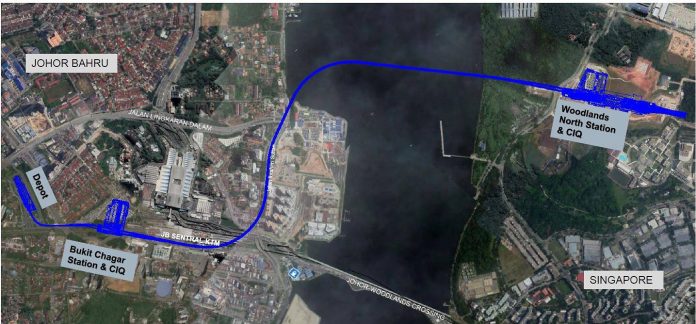Advantages and Disadvantages of the RTS Link
Public transport which is smart and efficient will help boost economic activities and elevate Johor Bahru’s status as a focal point for development in the region. The RTS Link will be the first light rail transit system to be built in JB, a major gateway into the southern part of Peninsular Malaysia. Therefore, it is pertinent it is built according to schedule and international standards.
The primary benefit of the RTS Link is it being a confidence booster to an otherwise sagging economy. The prospects offered during the construction and operation stages give rise to more job and business opportunities. It also renewed hopes of more buyers investing into the property market in JB.

Apart from easing the Causeway congestion, it will improve connectivity, foster people-to-people ties and generate shared economic and social benefits to the region. The offering of a comfortable, affordable and modern form of travelling is a desirable feature in today’s modern vehicular mobility.
The project would bring a positive economic impact to industries such as tourism and real estate, especially in JB. We expect more hotels and shopping malls to be developed in JB once the passenger ridership numbers increase. Due to the lower operating cost here, the hotels here will also see increased MICE activities especially from Singapore.
It will create a rail infrastructure between Malaysia and Singapore that is efficient, cost-effective and integrated with the public transportation system of both countries. The RTS Link project will expand the supply chain and develop the rail technology industry in Johor and provide jobs with the depot in Wadi Hana. About 1,500 jobs are expected during the construction period while 150 supporting industries will benefit downstream from activities directly or indirectly. Other indirect benefits include more consultancy packages for the locals, opportunities for contractors and civil works. About 40% of the total infrastructure construction cost will be allocated to Bumiputera contractors, including those from Grade 1 to Grade 6 from Johor.
In a gist:
Pros:
- Help ease congestion.
- Enhance trade, business, people movement, logistic / supply chain between the two countries.
- Serve as a catalyst to revitalise JB city centre development and JB transportation network.
- Especially convenient for those who needs to commute daily, i.e. students and workers as well as some day-trip shoppers from Singapore.
- Property developments within close vicinity to the RTS station will benefit.
Cons:
- RTS solves the travellers’ congestion issue on the causeway but their point-to-point transfer from homes to JB RTS station and from Woodlands North RTS station to workplaces / schools is another set of problems.
- Insufficient car parking lots might be aggravated if more travellers choose to park nearby the RTS vicinity in town.
- RTS is using the Light Rail Transit (LRT) system instead of the Mass Rapid Transit (MRT) system. LRT typically operates on small train carts and narrower track with smaller capacity. This might give rise to scalability issues when the system needs to be upgraded in the future.
- Due to the convenience offered, there is always a possibility that more Malaysians will opt to travel and work in Singapore, causing a further brain-drain and manpower shortage in Johor.




